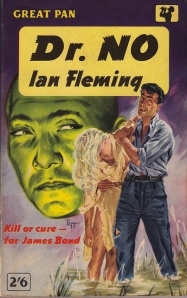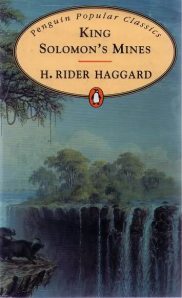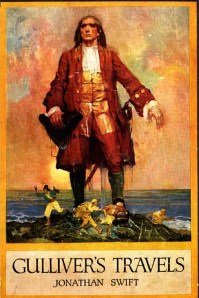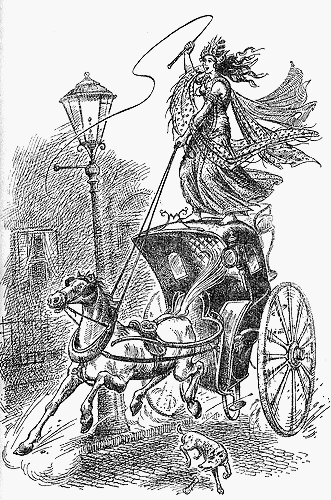Note: I was surprised when I re-read this article on CAS from 2004, because I didn’t find its prose particularly painful or embarrassing. I’ve made only one big change, restoring the comparison that I originally began the essay with but which I suppressed for publication at the Eldritch Dark for fear of seeming gratuitously offensive. Everything in the essay, including the comparison, is of course intended to be taken with complete seriousness. Tolkien is one of the authors I have most often re-read, but, as I’ve said before, I wish that someone would translate Lord of the Rings into English.
Science or Sorcery? Interrogating the Supratextual Interface of Klarkash-Ton and the Hobbitual Offender, Simon Whitechapel
The scientific spirit, which cannot leave anything alone and aspires to draw the whole universe of objects, people, ideas and even feelings into its own dull, inhuman empire, was certain, sooner or later, to cast its screwed-up, calculating eyes on the splendour in the grass and the glory in the flower. — Peter Simple, The Stretchford Chronicles (1980).1
Où sont les neiges d’antan? (Where are the snows of yesteryear?) — François Villon, Ballade des Dames du Temps Jadis (1461).
If the Earth were a human body, the United States of America might well be identified as a cancer. There are three strong parallels: growth, greed, and influence. Cancers grow explosively, gobble energy, and spread in their worst forms to every part of the body. Mutatis mutandis, the United States has done the same, growing in a couple of centuries from a tiny colony to a continental superpower that now consumes perhaps a fifth of the world’s resources with only a twentieth of the world’s population,2 and that exports its culture and language to every corner of the world. More and more people outside its borders are growing up to think, act, and talk like Americans, discarding their own histories and cultures as they do so. This American triumph has coincided with, and in part been built on, the triumph of modern science, and like science the United States is based on a rejection of tradition and a belief in the possibility, and even the necessity, of progress.
But as Sir Isaac Newton (1643-1727), one of the founders of modern science, pointed out, for every action there is an opposite and equal reaction. He was talking about physics, but actions have reactions in the mistier world of culture too and simultaneous with the rise of America in the late nineteenth and early twentieth centuries came the rise of the literary genre of fantasy. Like its coeval science fiction, fantasy represents a flight from the present, but where science fiction flies more or less optimistically into the future, fantasy flees more or less pessimistically into the past: it could be defined as an attempt to write as though America did not exist. America offers democracy, science, and rationalism; fantasy rejects them in favor of monarchy, magic, and mystery.
And understandably so: like America itself, democracy, science, and rationalism are profoundly unnatural things, appearing very late in human existence and truly accepted and appreciated by very few of us, for they do not appeal to the irrational and numinous aspects of our nature. America is unnatural because it is deracinated, a conscious, rational experiment in nation-building whose immigrant citizens are cut off from their roots in ancestral history and homeland. The popularity of fantasy in America and the societies its rootless culture has most heavily influenced proves that millions of us feel the loss. Fantasy’s rejection of science and flight from the scientific American present can be summed up by these lines from J.R.R. Tolkien’s The Lord of the Rings (1954-5) in which the wizard Gandalf describes his confrontation with the wizard Saruman, who has recently exchanged his white robes for robes of many colors:
“I liked white better,” I said.
“White!” he sneered. “It serves as a beginning. White cloth may be dyed. The white page can be overwritten; and the white light can be broken.”
“In which case it no longer white,” said I. “And he that breaks a thing to find out what it is has left the path of wisdom.”3
Isaac Newton broke white light in precisely that way with a prism, gaining knowledge as he discarded wisdom. But there was more to Tolkien’s rejection of Newtonian reductionism than simply science: Newton was also a Protestant, and America is a Protestant nation. Like science, Protestantism is based on a rejection of tradition, and because, like America, it is deracinated, it withers very readily: where its offspring rationalist secularism leads, Protestantism sooner or later follows.4 Tolkien (1892-1973) was Catholic, belonging to a church with deep roots, and though his books are early symptoms of her present decadence, they contain all the anti-rational, loss-assuaging ingredients listed above: monarchy, magic, and mystery. One of those books is, after all, called The Return of the King, and the pessimistic, future-fleeing aspects of fantasy are clearly symbolized by the way Tolkien sets his evil empire of Mordor in the east, where the sun rises, and his haven of peace in the west, where the sun sets.
But beside being Catholic and anti-rationalist, Tolkien was, more importantly, a bad writer. His most famous book, The Lord of the Rings, epitomizes what Europeans would see as the worst failings of American popular culture: it is sentimental, shallow, and clumsy.5 His attempt to flee the American present in some ways carries America with it. And that is one of the great ironies of fantasy literature: its most popular, and least subtle, exponent is European, while one of its greatest and most subtle is not merely American but Californian, living and dying in the most “future-crazed”6 state of all: Clark Ashton Smith was born in 1893 in Long Valley, near Sacramento, and died in 1961 a few miles north in Auburn.
But CAS had an English father and did not grow up in any of California’s cities, which may be much more important than it appears. California is one of the youngest states of one of the world’s youngest nations, but its landscape is ancient and its landscape is what CAS was most familiar with: he grew up on his father’s “forty acres” of homestead.7 Straight lines and right angles are rare in nature, ubiquitous in modern cities, and they may have much stronger effects on our psychology than we realize.8 In the old worlds of Europe and Asia, where cities are thousands of years old, streets wind and twist, because the cities of Europe and Asia have grown rather like plants; in the new world of America, streets run in straight lines intersecting at right angles. American cities are planned, rational attempts to conquer and control unplanned, irrational geography, and perhaps the reputation of New Englanders for subtlety and guile rises from their surroundings. Cities like Boston are old enough to have grown in the winding, twisting old world fashion, and perhaps they train their modern inhabitants in the oblique and indirect. CAS’s friend and mentor H.P. Lovecraft (1890-1937) was an urban New Englander: could he have developed his subtle, allusive fiction had he grown up in a city like Chicago or New York, where the streets may train the mind in linearity and directness?9 Could the rural CAS have developed his subtle, allusive fiction had he grown up in a city like San Francisco or Los Angeles?
I would suggest not, but that there is more to an artist’s growth than his physical surroundings is clearly proved by Tolkien, who lived in ancient, alinear England and wrote his crude fantasy amid the winding, twisting streets of Oxford. However, human beings inhabit societies too, and though Lovecraft and CAS may have escaped the stultifying effects of American town-planning, perhaps they benefited from the liberating effects of American politics. The races of Tolkien’s world are clearly based on the English class system: the hobbits, for example, are the rural proletariat and minor bourgeoisie, the orcs are the industrial proletariat, and the elves are the aristocracy whose well-nourished scions Tolkien encountered at Oxford. Compare these passages, the first from Evelyn Waugh’s Oxford novel Brideshead Revisited (1945), the second from Tolkien’s The Hobbit (1937):
About six of them came into my room, the rest stood mouthing outside. My dear, they looked too extraordinary. They had been having one of their ridiculous club dinners, and they were all wearing coloured tail-coats – a sort of livery. ‘My dears,’ I said to them, ‘you look like a lot of most disorderly footmen.’ Then one of them, rather a juicy little piece, accused me of unnatural vices. ‘My dear,’ I said, ‘I may be inverted but I am not insatiable. Come back when you are alone.’10
‘Well, well!’ said a[n Elvish] voice. ‘Just look! Bilbo the hobbit on a pony, my dear! Isn’t it delicious!’ ‘Most astonishing wonderful!’ Then off they went into another song as ridiculous as the one I have written down in full. At last one, a tall young fellow, came out from the trees and bowed to Gandalf and to Thorin.11
Tolkien and Waugh were both snobs and both, as it happens, of below average height. Tall Lovecraft’s and tall CAS’s fiction does not suffer from this snobbery, and although the stories of their friend Robert E. Howard (1906-1936) – who grew up in rural Texas – continually pluck the chords of monarchy, magic, and mystery, his hero Conan becomes a king by brawn and brain, not by birth. But Howard, although a far better writer than Tolkien, is the least interesting of the Weird Tales triumvirate, and CAS’s fiction is aristocratic in more than its mention of kings and emperors. He did not write for the canaille, which is why he used words like canaille:
Yes, indeed, one could write numerous reams on the subject of style. The style – or lack of it – required by nearly all magazine editors, [sic] would require a separate treatise. The idea seems to be that everything should be phrased in a manner that will obviate mental effort on the part of the lowest grade moron. I was told the other day that my “Door to Saturn” could only be read with a dictionary.12
One of the reasons popular American culture has been so successfully exported is that it has evolved to appeal to the lowest common denominator: it is “phrased” so to “obviate mental effort”, and ideally to bypass the intellect altogether. The simplicity and directness of an American export like rock’n’roll, whose appeal is based on strong rhythms and high volume, are mirrored in the simplicity and directness of American exports like hamburgers and Coca-Cola, whose appeal is based on fat, salt, and sugar. In short, American culture is democratic and inclusive, not aristocratic and exclusive like European culture. And so a second great irony of fantasy literature is that the European Tolkien is far more democratic and far more successfully exported than the Californian Clark Ashton Smith: Tolkien’s writing is crude and strongly flavored, the literary equivalent of hamburger and coke, while the haute cuisine of CAS remains unknown to many of the millions who read and re-read Lord of the Rings – or watch and re-watch its recent translation into film.
And perhaps that is another part of the key to CAS: fiction that can be translated readily and successfully into film, as Tolkien’s has been, tends to be superficial and direct. CAS’s greatest stories could not be successfully translated into film without being transformed in fundamental ways; that is, without being mutilated. This is another way in which CAS is profoundly un-American. America’s most successful and most characteristic export, advertising its culture to the world, has been film, and film, because it is the most powerful of media, is also the most destructive, killing imagination and feeding passivity and voyeurism.13 Cinema’s inbred cousin, television, exaggerates cinema’s failings and commits the additional crimes of trivialization and superficiality: watching a film at the cinema at least has a sense of ritual and occasion, and lasts about as long as a religious service; watching the same film using a television has no sense of ritual or occasion and can be interrupted and postponed at will.
CAS, born blessedly long before television and no movie-goer, was defiantly logophilic and logocentric, and in that sense is far more modern than artists who work in or are influenced by film: vision has existed for many millions of years among animals and the art based on it, appealing to universal simplicities, crosses boundaries of culture and even species with relative ease: recall the Greek tale of Zeuxis’s trompe l’oeil grapes pecked by birds. True language, on the other hand, appeared only with human beings and the art based on it, being far richer and far more subtle, does not cross barriers of culture with ease and without transformation and distortion. And here is a third great irony of CAS’s relation to JRRT. Tolkien, the professional scholar of language in the homeland of English, wrote with far less sensitivity and richness, beating drums and blasting trumpets where CAS played flutes and citheræ. But if fantasy is an attempt to write as though America did not exist, perhaps it took an American to know precisely how best to perform the nullification.
Notes
1. The Stretchford Chronicles: 25 Years of Peter Simple, The Daily Telegraph, Purnell & Sons, Bristol, 1980, “A graded land”, pg. 165.
2. A factoid often dragged out (with varying figures – sometimes consumption goes as high as two-thirds) by whining liberals and eco-puritans. The precise ratio is impossible to know, but America certainly out-consumes Europe, just as Europe out-consumes the Third World.
3. The Fellowship of the Ring, Book Two, ch. II, “The Council of Elrond”.
4. “Mark 4:5 And some [seed] fell on stony ground, where it had not much earth; and immediately it sprang up, because it had no depth of earth: 6 But when the sun was up, it was scorched; and because it had no root, it withered away.” Because they have deep roots, Catholic and Orthodox Christianity resist the scorching sun of secularism much more effectively.
5. The Hobbit, with much less ambition, achieves much more.
6. Peter Simple, The Stretchford Chronicles: 25 Years of Peter Simple, The Daily Telegraph, Purnell & Sons, Bristol, 1980, “Let them be left”, pg. 173: “Environmentalists, conservationists, anti-pollutionists: the dull, pseudo-scientific words, endlessly repeated – imports, like so much else, from future-crazed America – can arouse in certain moods a perverse rage to build oil-refineries all over Dartmoor.”
7. “As I Remember Klarkash-Ton”, George F. Haas, from The Black Book of Clark Ashton Smith, Arkham House (see online copy).
8. In one famous psychological experiment, Zulus who lived in round huts and ploughed in curves were found to be much less susceptible to certain optical illusions (e.g. the Müller-Lyer arrow illusion). See, for example, the discussion in R.L. Gregory’s Eye and Brain: the Psychology of Seeing.
9. See Lovecraft’s short story “Haunter of the Dark” (1936), set in the New England city of Providence but with a protagonist from the straight-lined, right-angled Wisconsin city of Milwaukee: “As Blake climbed higher, the region seemed stranger and stranger, with bewildering mazes of brooding brown alleys leading eternally off to the south. … Twice he lost his way …”
10. Op. cit., Book One, “Et in Arcadia Ego”, ch. 2
11. Op. cit., Chapter 3, “A Short Rest”.
12. Clark Ashton Smith: Letters to H.P. Lovecraft, Necronomicon Press, West Warwick (Rhode Island), 1987, pg. 23, “c. mid-December 1930” (see online copy).
13. In fantasy’s sister genre, horror, England and America again provide the most successful writer and one of the greatest, but this time England wins: the American Stephen King (1947- ), the most successful writer of horror, is a cinematic writer weaned on film and has nothing of the subtlety and depth of the English M.R. James (1862-1936) (see CAS’s appreciation “The Weird Works of M.R. James”).
© 2004 Simon Whitechapel


































